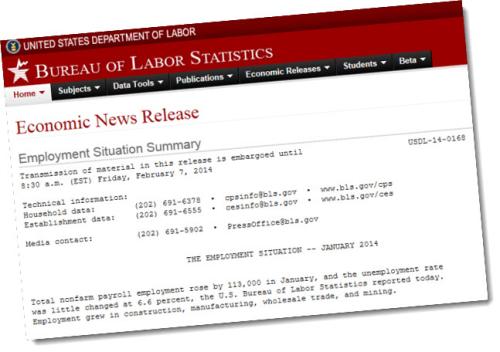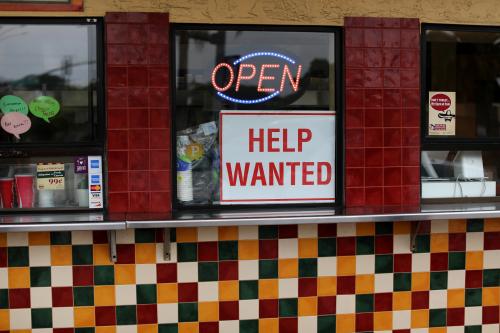Despite recent gains in employment rates across the country, one in seven, (or 15 percent) of American men between the ages of 25 and 54 currently aren’t working—and this number has been on the rise for decades. This troubling trend has led to wasted human potential, more people collecting government benefits, and fewer people paying taxes, all of which are harmful to the economy as a whole.
But why is this happening? In a new video, David Wessel, Director of the Hutchins Center on Fiscal and Monetary Policy at Brookings, provides a few possible explanations:
Incarceration rates are rising, and criminal records pose employment barriers
Over the past 30 years, incarceration rates in the U.S. (especially for African American men) have increased to unprecedented levels, with about 2.25 million Americans behind bars as of 2014. Once prisoners are released, their employment prospects can be dim. Many employers are reluctant, or in some cases forbidden, to employ people who have been incarcerated.

Educational attainment is closely tied to employment
According to Wessel, “it’s no longer possible to get a good job with just a strong back and a good attitude.” A man with only a high school diploma is twice as likely to be out of work as a man who has a four-year college degree. And, of the 9.3 million men between the ages of 25 and 50 who weren’t working last year, 1.7 million had a bachelor’s degree or higher, 2.3 million had some college or an associate’s degree, and 5.3 million had nothing beyond a high school degree.

More prime-age men are collecting disability benefits
There is an increasing number of prime aged men collecting disability benefits, and, as Wessel points out “once a man goes on disability, he’s very unlikely to come off.”
Once a man goes on disability, he’s very unlikely to come off.
Use of pain medication
The use of pain medications, including opioids, among unemployed men is significantly higher than those who are employed. Forty percent of the men who aren’t working and aren’t actively looking for work report taking pain medication every day, compared to 20 percent of those in the workforce.

Many jobs pay low wages
For some men with little education or few marketable skills, jobs pay poorly—perhaps so poorly that these men don’t believe it’s worthwhile to work, says Wessel.
Jobs pay poorly— perhaps so poorly that these men don’t believe it’s worthwhile to work.
Where do we go from here?
As Wessel pointed out in an earlier report on the subject, there are several policy options for addressing this problem. The government could subsidize work programs to get more men into the labor market, invest in education and trainings to help men gain marketable skills, or provide subsidies to employers to incentivize the hiring of low-skilled workers.
Additionally, by banning laws that discriminate against ex-convicts and finding alternative punishments for those who commit minor crimes, more men who currently face barriers to employment imposed by the criminal justice system would be able to find work.
Though there’s no one clear solution to this problem, as more Americans feel left behind in the wake of globalization and technological revolutions in the workforce, it’s critically important for policymakers to consider their employment prospects. As Wessel put it, “this is not an easy problem to solve, but it’s a problem we cannot afford to ignore.”
Learn more
Watch former White House economist Jason Furman talk with David Wessel about why so many men in the prime working ages of 25 to 54 are neither working nor looking for work.
The Brookings Institution is committed to quality, independence, and impact.
We are supported by a diverse array of funders. In line with our values and policies, each Brookings publication represents the sole views of its author(s).




Commentary
Why are so many American men not working?
March 6, 2017